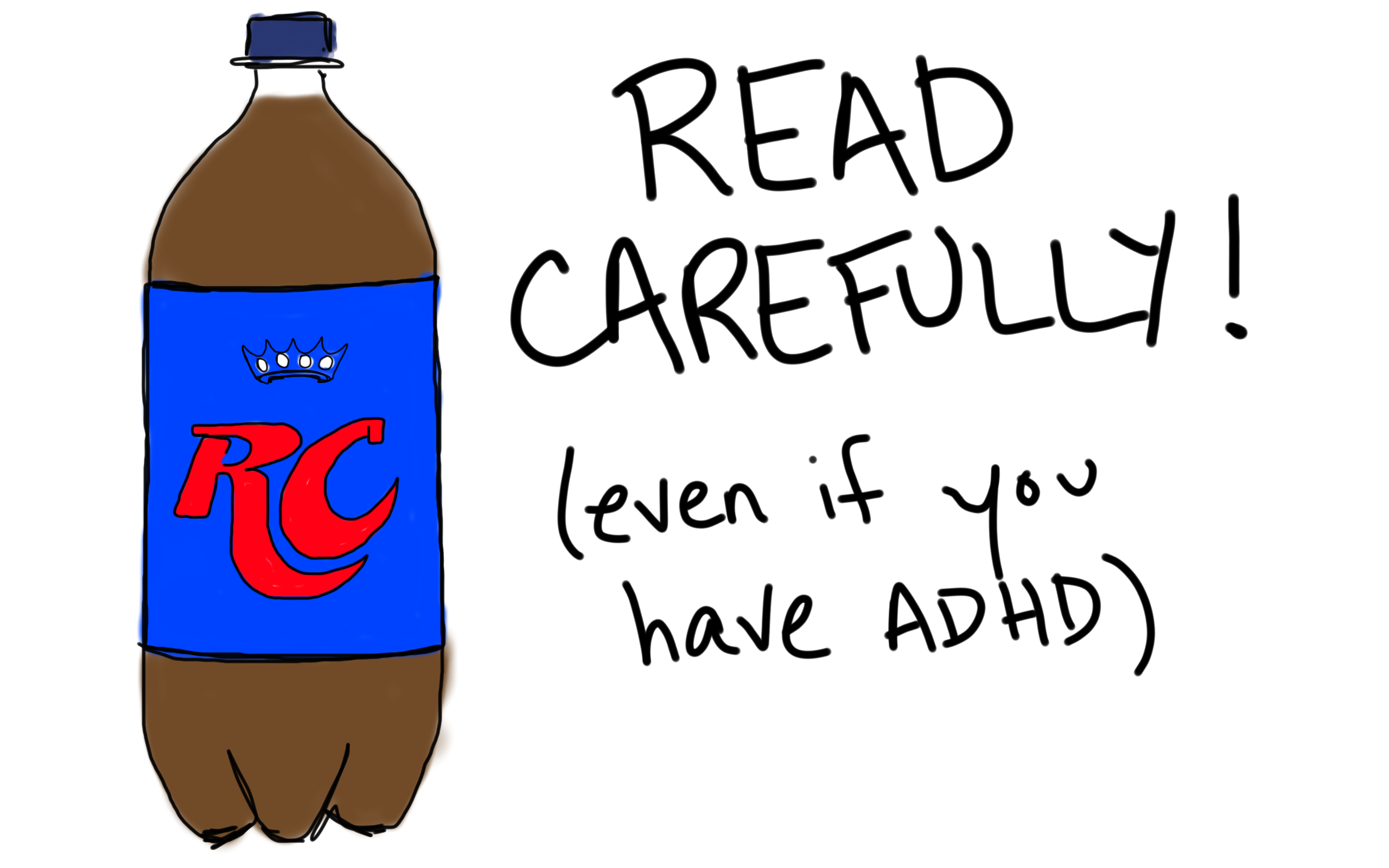My sixth grade math teacher didn’t like me very much. Most of my memories from his class are of surly interactions and (in my assessment) unfair grades. And one other thing I still reference to this day: all over the room, he’d suspended empty 2-liter RC Cola bottles from the ceiling.
RC Cola was his mnemonic for “read carefully.”
Corny jokes aside, few life skills rank higher than the ability to read carefully. It starts with word problems in math class, and continues for the rest of our lives. People with ADHD often don’t read carefully, and when we try, it can feel downright painful. I should know. I filled out my jury duty questionnaire today, and accidentally clicked “yes” when it asked if I was a member of my state’s organized militia.
I’m usually pretty good, though, and it’s not thanks to my long attention span. Here are a few ways I read carefully.

Read out loud
Reading aloud isn’t just for children’s picture books. Some people read at the same speed they talk, while others read faster. I’m in the faster camp, and reading aloud helps me slow down and monopolize more of my brain for reading.
If I find myself struggling with something, I stop and read it aloud. It changes my perspective just enough to make it click. I suspect it’s a lot like explaining a problem to someone else to help me see where I’ve gone wrong. Plus, when I read aloud, I can’t skim — I need to read every word.
Don’t fear the printer
I believe in minimalism and frugality and conserving resources. When I read that “please consider the environment before printing this message” reminder in someone’s email footer, I get it.
Sometimes I have to print it out, anyway. Not always, but sometimes. It might be the class welcome letter from my son’s teacher, a grant application, or a short story I’m submitting for publication. For my favorite reading and editing techniques, I need a hard copy.
I know many people who don’t own printers. It sounds well and good to go green, and do everything electronically. The reality is, sometimes I need to engage my brain’s tactile centers. I can’t get this with an electronic device. Maybe some people can, but at this point, I need to own it: those people aren’t me.
I print double sided, or on scrap paper, but I do print, and I print more than most people I know.
Highlight & underline
Most of the time, I print so I can highlight and underline. Before you tell me about the coolest app that allows me to do this on my Kindle, computer, or tablet, let me cut you off and tell you: I’ve tried. It’s not the same.
Something about the paper in front of me, the feel of the highlighter…who knows what the secret is. A highlighter helps me slow down, mark things I need to remember (like deadlines or supply lists), and catch important details.
I’ve used this strategy to win thousands of dollars in grant funding, file my tax return, complete complex banking documents, and sign my kid up for summer camp.
Rewrite
When I got my kiddo’s welcome letter for school this summer, I recopied the key info into my notebook: what I’d need to bring on orientation day, and what I’d need to send with him in his bag every morning. This kind of redundancy can feel tedious, but it helps me feel more in control. Just like with the calendar in my bullet journal, the act of slowing down and reading carefully enough to take notes helps me process it more deeply in my brain.
Do what works
Of course, like with my jury duty questionnaire, I still make mistakes. Whenever someone in our house fails to read carefully — and we have ADHD, so it happens somewhat often — I say, “RC Cola!” and try to laugh about it.
But really, I’ve gotten to the point where I can laugh about it (sometimes) because I’ve worked hard on these RC Cola strategies. I’ve realized it’s not about being cool, or going green. It’s about my brain, and how I can get information to stick in there. And sometimes the way to do that sounds old-fashioned, not befitting a self-employed 30-something. I used to resist using highlighters and taking notes by hand because it made me feel like I was still in middle school, highlighting the thesis statement on my English paper. But for all the ways technology helps me every day, my reading comprehension strategies are a little old-fashioned.
And that’s okay. Because they work.
What about you? How do you make sure you’re catching the important stuff when you read?
Hey there! Are you enjoying The ADHD Homestead?
Here's the thing: I don't like ads. I don't want to sell your attention to an advertising service run by the world's biggest data mining company. I also value my integrity and my readers' trust above all, which means I accept very few sponsorships/partnerships.
So I'm asking for your support directly. For the cost of one cup of coffee, you can help keep this site unbiased and ad-free.
Below you will find two buttons. The first lets you join our crew of Patreon pals and pledge monthly support for my work. Patrons also have access to my Audioblogs podcast. The second takes you to a simple donation page to pledge one-time or recurring support for The ADHD Homestead, no frills, no strings. Do whichever feels best for you!

